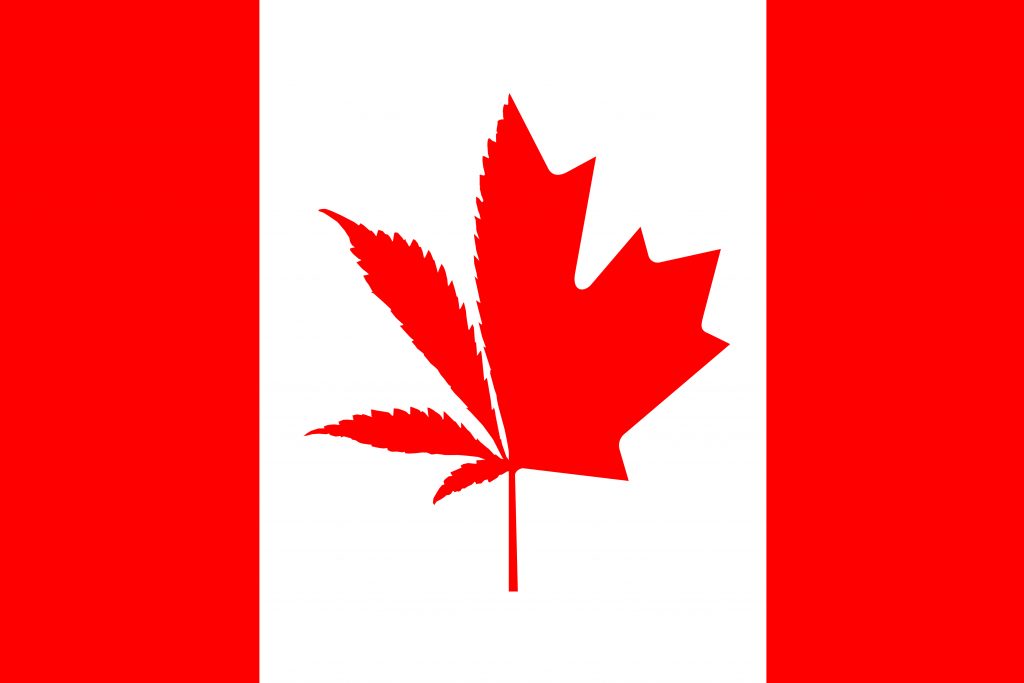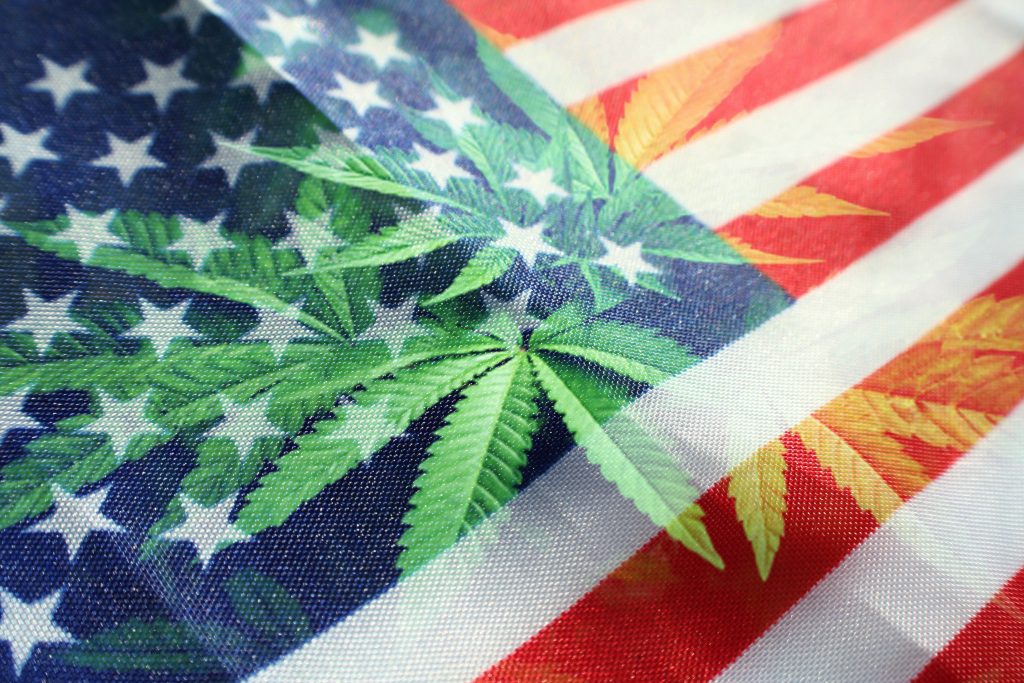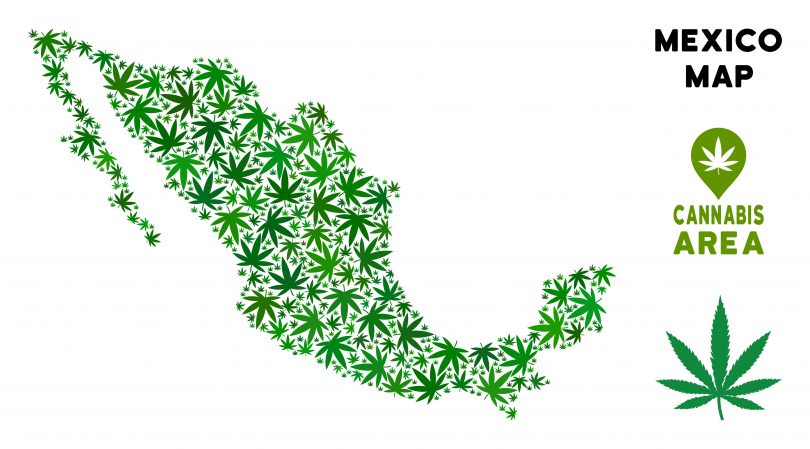Uruguay started it as the first country to go cannabis legal. Canada was the second country to fall. While the US takes its time with infighting between parties and factions, Mexico is ready to sweep in and steal the show, poised to become the biggest legal cannabis market to date.
The world of legal cannabis is ever-changing. Sign up to our newsletter to stay in-the-loop.
It’s true that US states have also gone legal, but a minority of states don’t constitute a legalized country. What is most important about American cannabis legalization, is that America holds the single biggest legal cannabis market with California. This market may very well be eclipsed by the upcoming Mexican legislation that will bring Mexico into the recreational cannabis world.
But how will it really function? And how will it compare to the other legalized countries? Legalizations, after all, are not created equally, and every location has its own set of parameters, and its own structural setup.
A look at Uruguay

The first thing to know about cannabis reporting is that it’s not very good, anywhere. Numbers vary greatly in nearly every publication, governments don’t seem very excited to release decent information, and writers tend to focus more on long ranging predictions for the market which are so massively variant that it almost feels like they’re not all referring to the same thing. Any specific numbers about cannabis markets, legal or not, should be taken with a grain of salt. Having said that…
Uruguay certainly isn’t the biggest legal cannabis market, and its not in the running right now. Uruguay isn’t terribly concerned with having a massive free market trade when it comes to cannabis. In fact, the Uruguayan system is government run with set places where cannabis can be dispensed, maximum sale limits, and set prices that keep it cost effective. The last time the price was adjusted, it came to $1.23 per gram of flower (which is 53 Uruguayan pesos). About 70% of this amount goes back to producers, while the rest goes mainly to the pharmacy responsible for the point of sale and regulators. As of right now, all of the cannabis sold in pharmacies comes from only two producers – part of the issue for supply problems as these companies have not produced the required amount.
Uruguay had specifically wanted to chip away at the cannabis black market, which is the basis for a system with set (and low) pricing. To anyone not fully paying attention, it means Uruguay sells top quality cannabis, at approximately $4.30 per 1/8th. This greatly breaks the standard price point which globally puts 1/8th of good cannabis at about $50, give or take $10.
Uruguay’s market doesn’t move as quickly as that of Canada or the US states, likely because it doesn’t leave room for huge profits, or corporate manipulation. On the other hand, it’s a much stricter system which makes it harder to actually obtain marijuana. Uruguay has suffered from supply issues since cultivation of marijuana for recreational use is strictly monitored, and only currently allowed by two entities.
Uruguay started its program back in July of 2017, and since its inception up until February of 2020, just under 4,000 kilograms have been sold. This according to the (IRCCA) Institute for the Regulation and Control of Cannabis. More than half of this amount was sold in the capital city of Montevideo. It’s expected that sales would’ve been higher had Uruguay not fallen prey to supply issues.
A look at Canada & the US
Canada was the second country to fully go all-in with cannabis legalization, officially legalizing it in October 2018. Canada has a completely different set-up from Uruguay, offering a free market system where individual businesses can receive licenses to sell cannabis products. Products are priced however manufacturers feel like pricing them, and then duly taxed by the government, either just federally, or locally and federally as well. Based on sales statistics from May of this year, the annual revenue for recreational cannabis in Canada is approximately $1.6 billion. In comparison, Uruguay sold about 4,000 kg over three years, with the last price of $1.23. This makes for approximately $4.9 million. This is obviously a huge difference, and highlights the discrepancy between a free market and a government run system.

The US States operate like Canada, offering free markets where cannabis has been legalized, with no set price point (or max price), and the ability for massive government taxes to be added on. In the US, California is the biggest cannabis state, pulling in approximately $3.1 billion in 2019 – though some publications cite this as both medical and recreational together, with very little good information to verify. What does appear true, is that this well surpasses every other legal state (the next was Colorado with $1.6 billion), Canada, and Uruguay, to be the highest grossing single cannabis market.
Does it matter what Mexico does?
These two systems are entirely different in how they operate. One provides a steadier system that can’t be inflated or abused as easily, but comes with drawbacks including supply issues. The other has no real limit in terms of what can be charged or earned, but comes with the drawback of raised price points, and less ability to divert from black markets. So, when looking at Mexico, there are a few things to consider.
I’ve been in Guadalajara for three months now, and while I won’t consider myself an authority on weed here, I’ve certainly learned a bit about how it works. There’s a big different between 1st world and 3rd world countries when it comes to price and quality. Technically the price point for standard ‘good’ weed is about the same, although I have yet to actually buy to the standard that I have in the past. And that’s because it’s not easy to find good pot in Mexico. Most of the Mexicans I’ve encountered don’t even know that the bad smelling, seedy mess they’re smoking is a much lesser form of cannabis in general.
We know from Uruguay that it’s more than possible to provide quality cannabis at an affordable price. Maybe if Uruguay hadn’t legalized first, we might not have known that. I’ve always taken that standard $50 per 1/8th as a general benchmark, and it’s about what I paid in Mexico when I finally found something better than the standard. But Uruguay forces a new question…can the standard price of cannabis be lowered, while still maintaining quality? And if Uruguay can manage it, why is anyone paying anything else??
Mexico’s plans…
It doesn’t look like Mexico is aiming for a government run program. In July of 2020, Mexico released yet more draft legislation from the Secretary of Health regarding its progress in legislation to legalize, which is scheduled to be finalized by December 15th (after several postponements). Mexico technically legalized cannabis judicially when five supreme court rulings were made in favor of legalization. For the past two years, the country has been waiting for its legislative system to catch up, and provide the legal framework made necessary by the court rulings. When court rulings are able to effect legislation in this way, it’s called jurisprudencia.

Right now, a couple of the issues causing the most concern are how accessible to make cannabis, and whether or not to protect the current 200,000 growers from competition from foreign firms. In a free market, local growers are often made illegitimate by large corporate firms, and that can have devastating effects on local citizens. As of right now, a bill waiting to clear the senate would allow for private companies to sell to the public. One of the points of activist groups is that released draft legislation has easily favored big business over small local growers. Other stipulations not included in previous draft legislation include limits for personal growing, and the need for obtaining a license from the government to smoke.
Implications
Right now, in the US, it’s being summarily discovered that if you raise the price of a good beyond a standard and appreciated price point – especially when said product is still easily available in the black market – you won’t be able to divert as much from said black market. In the US and Canada, people are used to paying more, and a certain percentage are even willing to pay inflated dispensary prices. But plenty aren’t, and that’s not even Mexico.
To give an idea, one USD is worth approximately 21 pesos. If anyone wants to wager a guess on how likely anyone in this economy is to be spending standard dispensary prices, go for it. My guess is, not so much. Which raises the question, will Mexico really be serving up high grade marijuana at prices a Mexican can afford?? After all, it raises prices to have regulation, and taxes, without even getting into company profits. How will these companies provide a better product than what’s already the norm, but without going above what the average person would pay for it? In a government run system this is way less of an issue, in a free market system, which Mexico is aiming for, it can mean totally out-of-whack prices, and the failure of a legal market.
Conclusion
It’s hard to have faith in this going well. I can’t imagine the same kind of dispensary setup making it here outside of those already rich enough to buy off the menu services that populate the area. The menu services are chock full of high-quality options, geared mainly toward the Americans in Mexico, and those who pull in enough income to make the high cost worthwhile. I haven’t found a Mexican yet who uses them.
So, we’ll see. As the date comes nearer for the legislation to be turned in, I wait, along with the rest of Mexico, to see what comes next. Hopefully in the next few months, it’ll become a standard in Mexico to smoke better cannabis. Otherwise…it’ll just be business as usual. Regardless of whether actual targets are met, with a population of 128 million, Mexico is likely to become the biggest legal cannabis market once legislation is finally passed.
Thank you for stopping by CBDtesters.co, your all-in-one spot for cannabis-related news. Stop by frequently to stay up-to-date with what’s going on, and sign up to our newsletter so you’re always in the know.
Resources
Synthetic Cannabinoids (Are they synthetic cannabinoids safe?)
Everything You Need To Know About CBD Isolate (a deep look into hemp extracts)
German Cannabis Flower Market is Ready to Explode
Delta-8 THC Contaminated Products, or Just Bad Press?
Government Assistance Options for U.S. Hemp Farmers Affected By COVID-19
Newest Cannabinoid Powerhouse – CBC – What Can It Do for You?
Cannabinoids 101 – Spotlight on CBN (Cannabinol)
Cannabis Cosmetics: What’s Allowed, What’s Not, and Where to Find Them (What is the latest regulations in Europe and which products are allowed)
CBG Study Shows Antimicrobial Properties of Cannabis
The CBD Flowers Weekly newsletter (your top resource for all things smokable hemp flowers)
The Medical Cannabis Weekly newsletter (International medical cannabis business report)
The Legal Landscape Of CBD Hemp Flower In Europe
The Delta 8 Weekly Newsletter (All you need to know about Delta 8 thc)Regulators Go After Smokable Hemp Flower – What Does The Future Hold?
Investing in Delta 8 THC Flowers – Is It The Right Move For Your Business? (All you need to know about the latest hot trend: Delta-8 THC)









